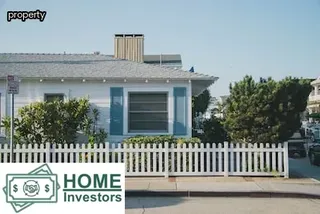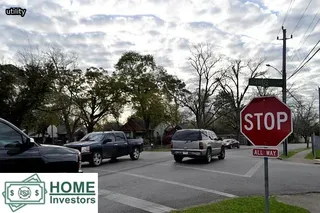Eviction in Minnesota can be a complex process for both landlords and tenants. It is important to have a comprehensive understanding of the eviction guidelines and regulations set by the state.
Minnesota defines eviction as the removal of an individual from a rented property due to their failure to follow the terms of the lease agreement or by law. Landlords must adhere to all legal notices when initiating an eviction, including providing notice to their tenant in writing.
A landlord must give the tenant at least 7 days written notice before beginning any eviction proceedings. Tenants can contest an eviction if they disagree with it or feel that their rights are being violated.
If a tenant does not vacate after receiving notice, then the landlord will need to file a summons and complaint with the court and attend an eviction hearing. The court will decide whether or not the landlord has cause for eviction and issue either a writ of restitution or denial depending on its decision.
It is essential for both landlords and tenants in Minnesota to understand their rights and responsibilities under state law so that they can navigate the eviction process properly.

Eviction is a legal process that can be used by landlords to remove tenants from their property for certain reasons. Common reasons for eviction include failure to pay rent, violation of the lease agreement, illegal activities occurring on the premises, and other behaviors that may cause harm to other tenants or the landlord's property.
In Minnesota, landlords must follow specific steps in order to legally evict a tenant. These steps include providing written notice of the eviction and filing an eviction lawsuit in court if necessary.
Tenants and landlords should be familiar with Minnesota's eviction laws and procedures in order to ensure that evictions are conducted properly and without violating any tenant rights.
Before filing an eviction complaint in Minnesota, it is important for landlords and tenants to understand the complexities of the process. A comprehensive guide to the Minnesota eviction process can provide valuable information regarding when a tenant may be evicted, how long the process takes, and other relevant details.
Landlords need to ensure they are receiving proper rent payments according to their lease agreement and if the tenant has not fulfilled their end of the agreement, then filing an eviction complaint is a viable option to seek payment or possession of the property. Additionally, tenants need to be aware that there are certain legal protections in place which allow them time to correct any issues before being evicted from their residence.
Knowing what must be done before filing an eviction complaint can save both parties time and money in court costs.

The Minnesota Eviction Process Timeline is an important tool for both landlords and tenants to understand in order to ensure a fair and legal process is followed. It starts with the Notice to Quit which must be delivered to the tenant by either personal service or certified mail.
Following this, the landlord may file an Unlawful Detainer Action in court if the tenant fails to comply with the notice. The tenant then has 14 days to contest the eviction after being served with a Summons and Complaint.
If not contested, an Order of Possession will be granted and issued by a judge, allowing the landlord to retake possession of their property. After this, an Order for Writ of Restitution can be issued by a judge at any time up until six months after possession has been taken back by the landlord.
It is important that both parties adhere to all necessary steps in order for the process to run smoothly and legally.
The eviction process in Minnesota can be a lengthy one. Depending on the situation, it can take from a few weeks to several months to complete.
In general, the landlord must provide written notice to the tenant before filing an eviction lawsuit. The length of notice depends on the reason for eviction and may range from 14 days to six months.
After that, a court hearing will be scheduled and both parties will have an opportunity to present their case. Following the hearing, if the judge rules in favor of the landlord, then a writ of restitution will be issued which gives them permission to remove the tenant from the premises.
However, if it is determined that they are not required to leave, then a stay of execution may be granted while other proceedings are taking place. Once all legal processes are completed, a sheriff's officer may need to physically remove any tenants who refuse to leave voluntarily.
Overall, it is important for landlords and tenants alike to understand their rights and responsibilities throughout the entire eviction process in order to ensure that it is handled properly and efficiently.

Submitting a complaint and notice to comply is an important part of the Minnesota eviction process for landlords and tenants. The landlord must provide the tenant with written notice that outlines the violation, including details of how they may cure or remedy the issue.
The tenant then has 14 days to respond before any type of legal action may be taken. If the tenant fails to respond, or if they are unable to remedy the situation, then the landlord can proceed with filing an eviction lawsuit in court.
Before doing so, however, the landlord must provide proof that they have served the tenant with a copy of their complaint and notice to comply. This can be done through certified mail, personal service from a sheriff, or posting on the premises in some cases.
Regardless of which route is chosen, proof must be provided as part of any eviction process in Minnesota.
The Minnesota eviction process is an important legal process that landlords and tenants should be familiar with. Serving the tenant and asking for possession is a critical part of the eviction process in Minnesota.
The landlord must serve a Notice to Vacate to the tenant either in person or by certified mail, giving them three days to vacate the premises if they are behind on rent or have violated a term of the lease agreement. Once served, the tenant has three options: pay the past due rent or remedy any lease violations; move out of the property; or contest the eviction in court.
If none of these options are taken, then the landlord can file an Unlawful Detainer Action with their local court, which will require a hearing for both parties to present their case before a judge. After this hearing, if it is determined that an eviction is warranted, then a Writ of Restoration may be delivered to law enforcement who can then order removal of all occupants from the premises.
It’s important for both landlords and tenants to understand their rights and responsibilities regarding this process so that all parties involved can have peace of mind knowing that it’s being handled properly.

When it comes to the Minnesota eviction process, both landlords and tenants should understand the steps for retaining possession after serving notice. Following a few steps can help ensure that the parties are aware of their rights and obligations.
First, the landlord must present a notice of eviction to the tenant. This must be done in writing, and it's important to keep records of this communication.
Tenants have 14 days to respond if they wish to challenge the eviction; if they don't, then the landlord may proceed with filing a forcible entry and detainer (FED) lawsuit in court. After this is done, tenants have five days to respond by appearing in court or filing an answer with the court clerk.
If they fail to do so, they will be required to leave without further legal action. It is important for both landlords and tenants to carefully review these steps and understand their implications when navigating through an eviction process in Minnesota.
Presenting evidence during an eviction hearing is a crucial step in the eviction process for both landlords and tenants in Minnesota. Both parties should understand the rules and regulations of providing evidence to the court, as well as how to properly present it.
It is important to be aware of what documents are admissible in court and any other necessary information needed for an effective presentation. Landlords must have valid legal grounds for evicting their tenant, such as failure to pay rent or a violation of the lease agreement, which should be supported by documents such as ledgers, rental agreements, photographs or witness testimony.
Tenants should also come prepared with evidence that supports their claim; this could include proof of payment or any other material that contradicts the landlord's accusations. Additionally, both parties should come with copies of all relevant documents in order to provide them to all necessary parties involved in the eviction hearing.
Knowing how to properly present evidence during an eviction hearing is key to having a successful experience during this process.

Evicting a tenant from a rental property in Minnesota requires landlords and tenants to be aware of the eviction process and its laws. It is important to ensure compliance with Minnesota's unique laws during the eviction process in order to avoid potential legal issues.
Before beginning the eviction process, landlords must provide written notice to tenants that includes any applicable state or local requirements. This notice must be served in accordance with Minnesota law, which may include personal service, mailing via certified mail or posting.
After receiving this notice, tenants have a certain amount of time to comply with the terms outlined in the notice or vacate the premises. If tenants fail to do so, landlords may proceed with filing an eviction case in court.
The court will then issue a summons and complaint requiring tenants to appear before a judge and answer to their alleged violations of the lease agreement. During this hearing, both parties can present their arguments and evidence for consideration by the judge.
Landlords must follow all rules set forth by Minnesota law throughout this entire process or risk having their case dismissed by the court.
Finding free resources to help with the eviction process is an important part of a comprehensive guide to the Minnesota Eviction Process for landlords and tenants. Fortunately, there are several ways for landlords and tenants to find useful information as they navigate this complicated legal process.
One resource that can be especially helpful is your local county court, which may have special programs designed to provide free or low-cost assistance with the eviction process. Additionally, various state agencies offer free advice on landlord-tenant law and other related matters, so it’s worth exploring these options before making any decisions.
Finally, online resources such as blogs, forums, and websites can offer valuable insight into the eviction process by providing tips on how to handle difficult situations and what rights both parties have throughout the course of the proceedings. With these resources at hand, landlords and tenants should be able to successfully navigate through the Minnesota Eviction Process without incurring too much expense or stress along the way.

DoorLoop is an online platform that streamlines the entire eviction process for landlords and tenants in Minnesota. It simplifies the paperwork, automates communication between parties, and provides a secure digital filing system to help landlords and tenants stay organized.
DoorLoop makes it easy to keep track of important documents such as rental agreements, notices of termination, court orders, and more. With its automated processes and user-friendly interface, DoorLoop can save time and make the eviction process in Minnesota easier than ever before.
Additionally, DoorLoop also offers resources such as a comprehensive guide to the Minnesota eviction process so that landlords and tenants can be fully informed about their rights and obligations under state law throughout the entire process.
DoorLoop provides a comprehensive suite of features to help landlords and tenants navigate the Minnesota eviction process. From start to finish, DoorLoop can provide a step-by-step guide on how to handle an eviction while protecting both parties' rights and interests.
By taking advantage of DoorLoop's demo, landlords and tenants can learn more about how the tool can simplify their experience with the Minnesota eviction process. Users can explore the intuitive navigation that allows them to quickly access the documents they need, as well as learn more about the automated notifications that keep everyone up-to-date throughout the entire process.
Additionally, DoorLoop provides guidance on best practices for handling disputes between parties so that everyone comes away with a positive outcome. With DoorLoop's demo, users are able to get an in-depth look at how this comprehensive solution can help them with their Minnesota eviction needs.

DoorLoop's comprehensive guide to Minnesota's eviction process provides an easy-to-follow roadmap for both landlords and tenants. All parties should understand the terms and conditions for signing up with DoorLoop.
Landlords are expected to provide the necessary documents, such as a valid lease agreement, while tenants must submit a completed application to initiate the process. Both parties must also agree to DoorLoop's fee structure and privacy policy.
The landlord is responsible for providing any forms required by local or state governments, while the tenant is expected to pay all filing fees associated with the eviction process. Additionally, DoorLoop provides an online dispute resolution system that allows both tenants and landlords to resolve issues quickly and efficiently without having to resort to costly court visits.
The Minnesota eviction process can be a daunting task for landlords and tenants alike. With DoorLoop, all the paperwork is streamlined, giving you more time to focus on managing your rental property.
The comprehensive guide to Minnesota eviction provides a step-by-step overview of the whole process from start to finish, so you'll always know what's expected of you. From notice requirements to court proceedings, we break down each step with clear instructions that make it easy for anyone to understand.
Additionally, we provide helpful resources such as FAQs, sample documents, and legal advice so you can navigate the process with confidence. Our goal is to save you time and money while making sure that your rights are protected throughout the eviction process.
DoorLoop provides an efficient way to keep track of all the moving parts involved in an eviction case, from filing paperwork and tracking deadlines to updating tenant contact information and keeping records organized. With our straightforward guide, landlords and tenants alike can benefit from a smoother eviction experience that saves them time and money in the long run.
In Minnesota, the eviction process can take anywhere between a few days to several months depending on the severity of the situation. The length of time it takes to evict someone in Minnesota is largely dependent on whether or not the tenant has responded to their landlord's initial notice to vacate.
If the tenant fails to respond, then the landlord must file an official complaint and summons with their local court before they can begin eviction proceedings. Depending on the county, it could take up to two weeks for the tenant to receive these documents and respond accordingly.
From there, if the tenant still fails to respond or comply with the landlord's requests, then a judge will hear both sides of the case and determine how long it will take for an eviction order to be issued. In some cases, this could take up to several months until everything is finalized and all paperwork is processed by both parties.
Eviction in Minnesota is a lengthy process that requires patience and due diligence from landlords as well as tenants who are being evicted. A comprehensive guide can provide information regarding every step of this process so that landlords and tenants alike know what to expect throughout each stage of an eviction in Minnesota.

In Minnesota, a landlord must provide the tenant with a 14-day notice to vacate after an eviction notice has been issued. If the tenant does not comply with the notice, the landlord may file an Unlawful Detainer lawsuit in district court to pursue eviction.
The court will then issue a writ of recovery, which gives the tenant five days to move out of the rental unit. After this five-day period, if the tenant still remains on the property, law enforcement may be contacted and they can physically remove them from the premises.
In most cases, tenants are required to pay all late rent and other charges that have accumulated during their stay. It is important for landlords and tenants to understand their rights and responsibilities under Minnesota law when it comes to evictions in order to resolve any disputes quickly and efficiently.
If you are facing eviction in Minnesota, it is important to understand the legal process. In some cases, you may be able to delay an eviction.
Knowing your rights and the steps necessary to delay an eviction can help you remain in your home for a longer period of time. To delay an eviction in Minnesota, tenants should first review their lease agreement for any language regarding late fees and other penalties.
If there are none present, renters may be able to negotiate with their landlord by paying the past due amount or coming up with a payment plan. Tenants should also contact their local municipality or housing authority office for additional resources such as legal aid and information on tenant rights.
It is important to remember that tenants cannot simply refuse to pay rent without consequence, so it is best to take action and start the conversation with your landlord as soon as possible if you are facing eviction in Minnesota.
The 30 day notice to vacate in Minnesota is an important part of the eviction process for landlords and tenants. This notice informs the tenant that they must vacate the property within 30 days.
It also states the reasons for the eviction, such as not paying rent or violating a lease agreement. In Minnesota, this notice must be in writing and include specific language regarding the landlord's rights if the tenant does not comply with the notice.
The tenant should be given this notice in-person or through certified mail, depending on the situation. After receiving this notice, it is up to the tenant to decide whether they will comply and vacate or dispute it in court.
Understanding this step of the Minnesota eviction process is key for both landlords and tenants navigating their rights and responsibilities under state law.